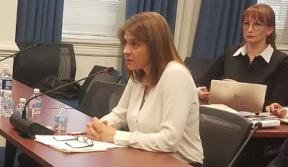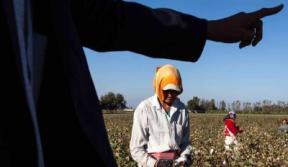First, a look at the funds designated to fight child labor in cocoa. Programs and initiatives that are considered part of the industry commitment must be approved by the CLCCG and must be in line with the Framework of Action, which the companies signed in 2010 (see the table below).
Hershey, the largest chocolate maker in the United States, rakes in over $5 billion in revenue every year. Barry Callebaut is one of the largest suppliers of chocolate in the world. As two of the biggest chocolate companies in the world, Barry Callebaut and Hershey are just as responsible as their counterparts for the atrocious condition of the cocoa industry. And yet, both have been miserly when it comes to the fight to remove children from the cocoa fields of West Africa.
Of course, it’s not sufficient to only measure companies based on the money that they’ve contributed, but also on the substance of their programs.
Here, Barry Callebaut and Hershey again fell behind. Hershey’s only initiative to fall under the CLCCG program requirements is the CocoaLink program, which sends text and voice messages to farmers to discourage the use of child labor and encourage more efficient farming techniques. By their own testimony, only about one third of the text messages address child labor issues. As there is still no evaluation report on this program, it remains unclear whether these messages have had any substantial impact on farmers’ lives. In fact, Hershey’s own anecdotal reporting suggests the program is slow to progress “due to low literacy levels and the general unfamiliarity with mobile phone usage.”
Barry Callebaut’s program aims to build two schools in two cocoa growing communities; a number that appears irrelevant compared to the estimated 36,000+ schoolrooms needed in these regions.
Not only have these projects been glacially slow in their development, they have failed to fundamentally change the nature of the cocoa supply chain. Where social projects exist, it is very likely that more kids are in school and fewer children are using machetes. But for the last 10 years, companies have been in a perpetual state of pilot projects, with no one company wanting to commit to scale up their initiatives.
So the question that remains for many of these initiatives is: what is the overall goal? The Ivorian government stated that they would need 36,000 additional primary schoolrooms in order to have even the possibility of universal schooling for Ivorian children. The government built around 3,000 schoolrooms last year, but the cocoa industry has only helped finance a few dozen of these over the last few years. While these resources have no doubt created benefits for some individuals in particular communities, it’s quite clear that these companies are not making a substantial impact on the dearth of schools and health facilities in cocoa growing regions. There is little to no conversation about the sustainability of these programs. How will companies ensure that the schools they have built will be staffed and supplied with materials for years to come? To create sustainable change, companies must focus more on changing their business models and less on charity projects.
Almost every company has committed to a strategy of increasing yields and productivity for cocoa farms in West Africa as a way to generate more revenue for farmers. Some companies have targeted a threefold increase in yield per hectare. This is a bold and lofty goal, which could really help farmers. But what remains to be addressed is the issue of labor supply. As productivity increases and the supply of child labor decreases, who will fill the gap? We have already seen labor problems in the cocoa producing industry for migrant laborers who come to plant, weed, and harvest cocoa, but have no contracts with their employers.
There is also the question of the environmental costs of scaling up production. Will increased pesticide usage damage the wells that Ivorians rely on every day? Will intense farming of the land deplete the soil and water? These are real concerns that must be addressed throughout the efforts to increase the productivity of West Africa’s cocoa industry.
No matter how many schools are built or how many health centers are staffed, the balance of power in the cocoa supply chain will remain in the hands of cocoa exporters and chocolate brands unless cocoa farmers can be empowered to negotiate a decent price for their crop. Until then, farmers will continue to live in poverty.
|
Company |
Total committed funds |
Average commitment per year |
|
Mars |
$2.7 million committed for 2011-2013 |
$904,000 |
|
Mondelez (Kraft) |
$2.32 million committed for 2009-2012 |
$508,000 |
|
Ferrero |
$1.14 million committed for 2012-2013 |
$570,000 |
|
Nestle |
$1.5 million committed for 2012-2015 |
$375,000 |
|
Hershey |
$600,000 committed for 2011-2014 |
$150,000 |
|
Barry Callebaut |
$300,000 committed for 2012-2014 |
$100,000 |


Comments
re: 2012 Wrap Up: Which Chocolate Companies Lead and Which Ones
This is morally reprehensible, abhorrent and totally wrong. Child labour must be stopped NOW
re: 2012 Wrap Up: Which Chocolate Companies Lead and Which Ones
Great article, thanks for your support of human labor rights! You should check out our new non-profit organization, The Justice Project. We are an open dialogue social platform committed to sharing the voice of educational, social, environmental, and economic justice. We would love to share your cause with our followers!
http://www.ajustdifference.org
Thanks again for your support!